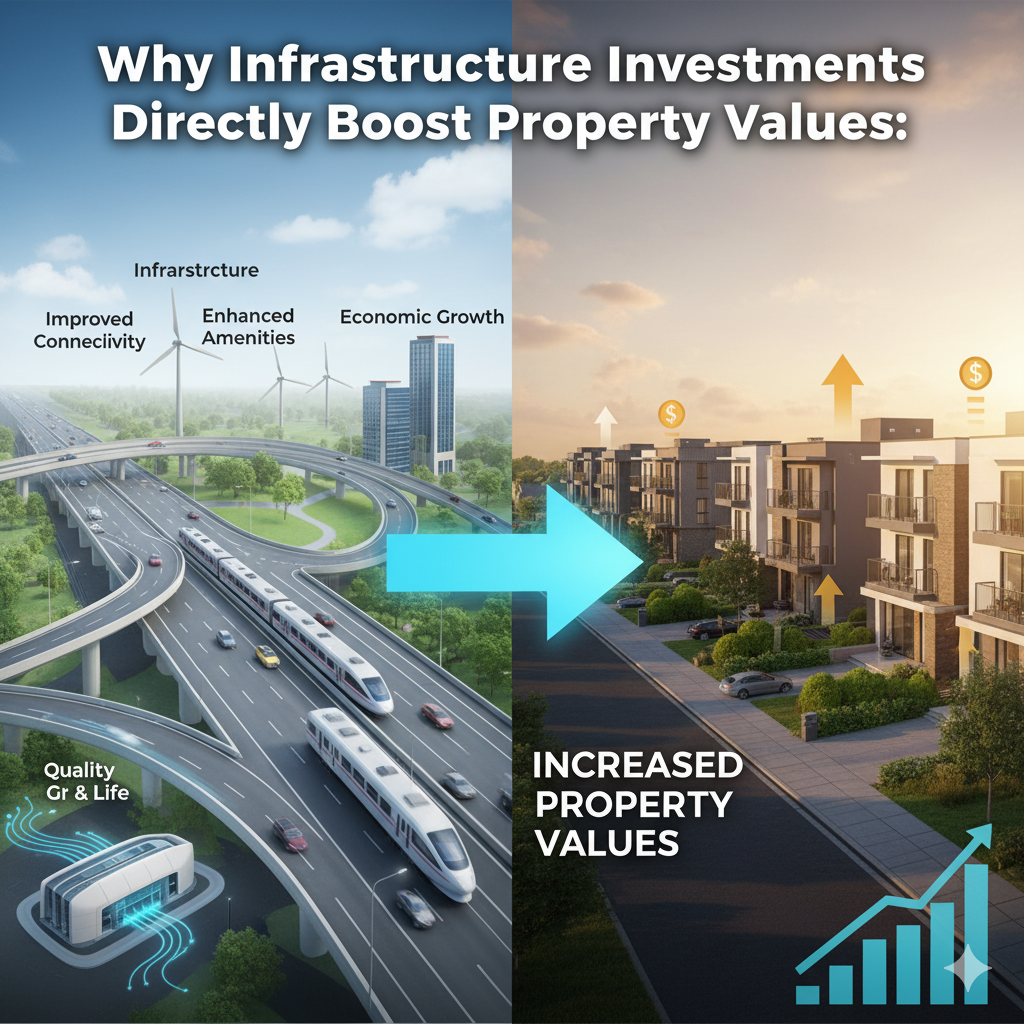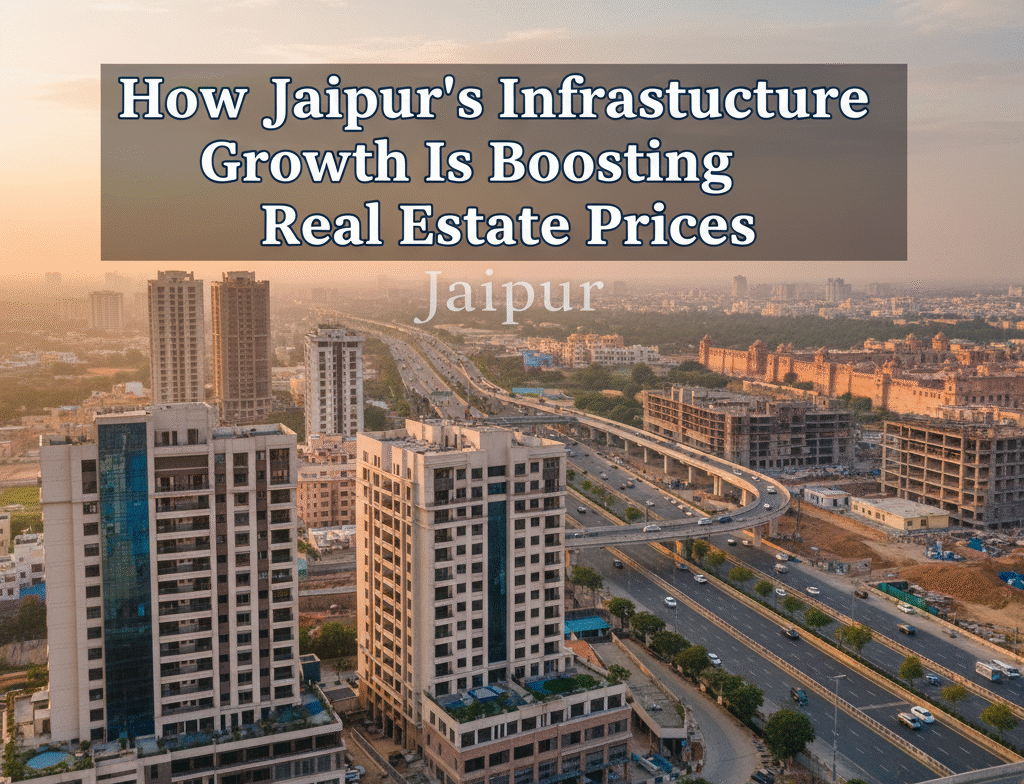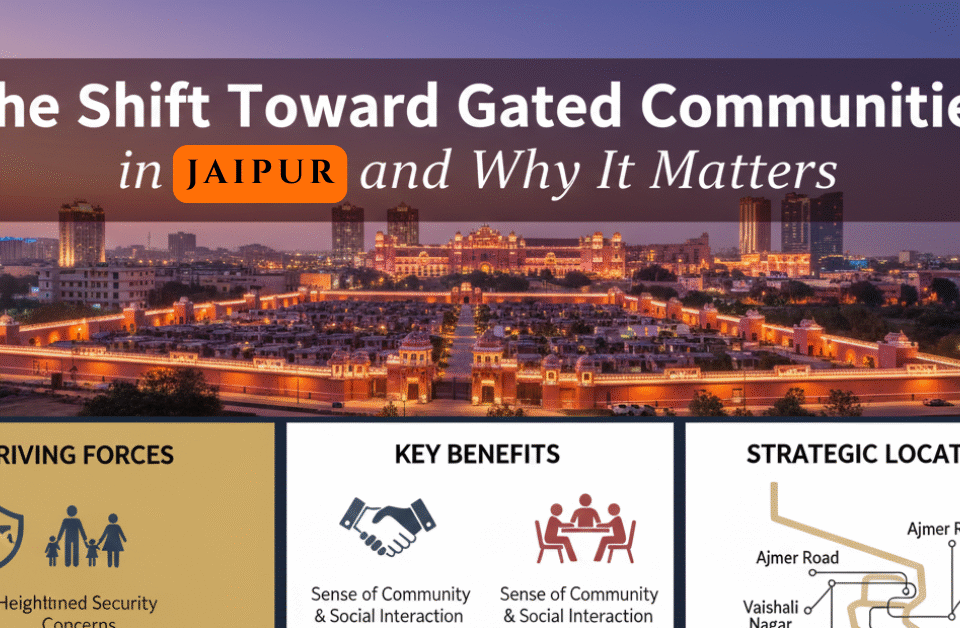Jaipur’s real estate market is experiencing an unprecedented boom, with property prices surging dramatically across the city. The Pink City has emerged as the fastest-growing Tier-2 real estate market in India, recording an impressive 98.2% property price growth and leading all comparable cities in demand and appreciation. This remarkable transformation isn’t happening by chance—it’s the direct result of massive infrastructure investments reshaping Jaipur’s urban landscape. From metro expansions to expressways and smart city initiatives, these developments are not just improving connectivity but fundamentally altering property values across neighborhoods. Understanding how infrastructure drives real estate appreciation is crucial for homebuyers and investors looking to capitalize on Jaipur’s growth story in 2025 and beyond.
Major Infrastructure Projects Transforming Jaipur’s Real Estate:
- Delhi-Mumbai Expressway Impact: Set for completion in 2025, this game-changing expressway will reduce travel time between Jaipur and Delhi to just three hours, effectively linking the Pink City to the NCR region. This enhanced connectivity is already driving property demand in areas along the corridor, as professionals and businesses recognize the potential for seamless access to India’s capital. Properties in locations with direct expressway connectivity are commanding premium prices and experiencing accelerated appreciation.
- Jaipur Metro Phase II Expansion: The ₹12,000 crore Jaipur Metro Phase II project is connecting key areas like Sitapura, Ambabari, and other rapidly developing zones, significantly boosting intra-city accessibility. Metro connectivity has historically proven to be one of the strongest drivers of real estate appreciation globally, and Jaipur is no exception. Properties within walking distance of metro stations see immediate value increases, with investors recognizing the long-term appreciation potential that comes with mass transit access.
- Northern Jaipur Ring Road Development: The ₹6,500 crore Northern Jaipur Ring Road adds another critical layer of connectivity, making suburbs like Jagatpura, Mansarovar, and Sirsi Road prime real estate zones. This infrastructure project decongests central areas while opening up previously inaccessible neighborhoods for development. Areas along the Ring Road are witnessing rapid transformation from agricultural land to residential and commercial hubs, with property prices reflecting this change dramatically.
- Master Development Plan 2025 Implementation: JDA has launched construction of 71 new sector roads under Master Plan 2025 in areas like Mansarovar, Bhankrota, and Niwaru, improving connectivity and sparking neighborhood construction activity. The plan outlines 11 satellite towns and four growth centers to ease urban pressure, offering affordable property options in emerging suburbs. This decentralization strategy is creating multiple growth pockets across Jaipur, allowing investors to find value in various price segments while benefiting from planned development.
- Airport and Highway Improvements: The expansion of Jaipur International Airport and government approval of flyovers on the Jaipur-Agra Highway are catalyzing new construction activity on the city’s outskirts. Improved air connectivity attracts business investment and tourism, both of which drive housing demand. The major overbridge near Govind Dev Ji temple and other infrastructure upgrades are systematically eliminating traffic bottlenecks and improving overall urban mobility.
Measurable Impact on Property Prices Across Key Areas:
The infrastructure boom has translated into concrete financial gains for property owners and created lucrative opportunities for new investors. Property prices have surged dramatically, with a 65% jump in new-launch pricing from ₹4,240 to ₹6,979 per square foot between 2023 and late 2024. This reflects exceptionally strong demand that continues into 2025.
Specific neighborhoods are experiencing even more impressive growth. JLN Marg witnessed 295.6% appreciation, Manchwa saw 228.6% growth, and Goner Road recorded 203.8% appreciation over the last three years. Current hotspots show sustained momentum—Ajmer Road properties now command ₹18,000 per square meter with 26.3% year-over-year growth, while Jagatpura plots range from ₹4,000-7,000 per square foot with many prime pockets delivering 20-25% annual appreciation.
Housing sales in Jaipur rose 5% in 2024, reaching 10,695 units, while sales value jumped 39% to ₹8,388 crore from ₹6,019 crore in 2023. This dual growth in volume and value indicates both increased transactions and higher property prices, confirming the market’s robust health and investor confidence.
Why Infrastructure Investments Directly Boost Property Values:

Infrastructure development creates a powerful multiplier effect on real estate values through several mechanisms. First, improved connectivity reduces commute times, making previously distant neighborhoods viable for daily living and working. Areas that were once considered “too far” suddenly become attractive residential options, expanding the effective city limits.
Second, infrastructure attracts commercial development and employment opportunities. The Kotputli-Agra Greenfield Expressway and Global Capacity Centre Policy are transforming Sitapura into a commercial hub, drawing IT firms, logistics companies, and startups. This employment generation spurs demand for nearby housing, creating organic price appreciation as workers seek convenient living arrangements.
Third, planned infrastructure provides certainty and reduces investment risk. When government commits billions to roads, metro lines, and public amenities, it signals long-term commitment to an area’s development. Investors and homebuyers respond by entering the market confidently, knowing their properties will benefit from sustained improvements rather than remaining in undeveloped isolation.
Strategic Investment Opportunities Created by Infrastructure Growth:
Savvy investors are positioning themselves ahead of infrastructure completion to maximize appreciation potential. The principle is simple: buy during construction when prices remain moderate, then benefit from value increases once projects become operational. Areas like Jagatpura, Ajmer Road SEZ belt, Tonk Road, and Kalwar Road offer this opportunity currently.
Jagatpura exemplifies this strategy—its transformation from quiet suburb to one of Jaipur’s fastest-growing hubs demonstrates infrastructure’s catalytic effect. Proximity to the airport, Sitapura Industrial Area, and educational institutions, combined with upcoming Ring Road links and metro connectivity, positions it for continued strong appreciation. Early investors who purchased properties before major infrastructure announcements have seen their investment values easily double within just a few years.
Similarly, Ajmer Road around the SEZ zone presents compelling opportunities. The corridor’s evolution from a simple highway into a modern living destination with JDA-approved plots ranging from ₹29,000-60,000 per square yard reflects the area’s transition. Infrastructure improvements guarantee continued demand growth as businesses expand operations in the SEZ, requiring housing for employees.
Jaipur’s infrastructure-driven real estate boom represents a rare alignment of government investment, private sector development, and genuine demand fundamentals. The 98.2% property price growth leading all Tier-2 cities isn’t speculative bubble activity—it’s the market’s rational response to transformative infrastructure creating real value and livability improvements. For homebuyers, this means purchasing property in well-connected areas with planned infrastructure offers not just a home but an appreciating asset. For investors, Jaipur’s current phase presents opportunities similar to what Bangalore, Pune, and Hyderabad offered a decade ago when their infrastructure booms began. The key is identifying areas where major infrastructure projects are underway but not yet completed—these locations offer the best risk-reward balance. As the Delhi-Mumbai Expressway opens, Metro Phase II becomes operational, and the Ring Road network expands, properties positioned along these corridors will see sustained appreciation. The time to participate in Jaipur’s infrastructure-driven growth story is now, before these projects reach completion and prices reflect their full value.




